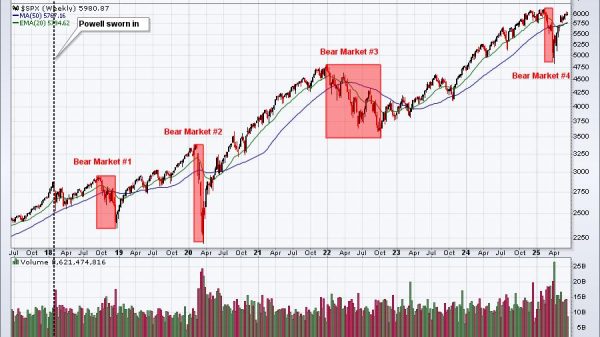How to Evaluate Bank Stocks?
People from all over the world are interested in bank stocks. As a result, there are plenty of questions about bank stocks.
For example, “How to evaluate bank stocks?” “How to analyze bank stocks?” etc.
Evaluating bank stocks is a multi-dimensional task that goes beyond looking at simple price-to-earnings ratios or dividends. Banks play a unique role in the financial system and have distinct characteristics.
Let’s focus on “How to evaluate bank stocks”
Here’s a guide to evaluating them:
Financial ratios:
Price-to-earnings (P/E) ratio: While this is a commonly used ratio for all stocks, it’s only one of many when assessing banks.
Price-to-book (P/B) ratio: Especially important for banks. A ratio under one can indicate that a bank is undervalued or facing difficulties, whereas a ratio above one might indicate potential overvaluation.
Return on equity (ROE): A measure of profitability. In the case of banks, an ROE between 10% and 15% is generally considered solid.
Net interest margin (NIM): Interestingly, it reflects the difference between the interest income generated by banks and the amount of interest paid out.
Let’s not forget about other important factors.
Asset quality:
Non-performing assets (NPAs): High levels of NPAs can indicate a bank’s vulnerability, as they refer to loans where borrowers aren’t making principal or interest payments.
Loan loss provisions: An increase can suggest that a bank expects more loan defaults in the future.
Capital adequacy and growth metrics
It is also important to take into account growth metrics, capital adequacy, and macroeconomic indicators when someone wants to know How to evaluate bank stocks.
Let’s start with capital adequacy.
Tier 1 capital ratio: Shows the bank’s core equity capital compared to its total risk-weighted assets. A higher ratio indicates a more financially secure institution.
What about the liquidity?
Liquidity: It is vital to know if the bank can meet its short-term obligations. The loan-to-deposit ratio can provide insights into this, with higher ratios possibly suggesting liquidity concerns.
Check the bank’s year-on-year growth in terms of loans, deposits, and assets.
Efficiency ratio: This indicates the cost to generate one unit of revenue, with lower ratios suggesting better efficiency.
Macroeconomic indicators: Interest rates, inflation rates, and the general state of the economy can greatly influence a bank’s profitability.
Management quality: How well a bank is managed can be ascertained by its strategic decisions, adaptability to changing financial landscapes, and innovation in offering new services.
Dividends: While dividends are a sign of profitability, for banks, it’s also crucial to ensure they aren’t distributing too much and thus compromising their capital adequacy.
Regulatory environment: Banking is a heavily regulated sector. Familiarity with the current regulatory environment, as well as potential future changes, can influence a bank’s profitability and growth prospects.
As a reminder, when utilizing ratios in order to compare banks, a person has to compare banks of similar characteristics.
The importance of banks
As you can see from the information mentioned above, it takes time and effort to learn more about the banking industry.
However, it isn’t too hard to understand how to evaluate bank stocks.
What makes banks so important? Let’s find out!
Banks have been instrumental in shaping civilizations, driving economic growth, and facilitating day-to-day financial activities for individuals and businesses. Here’s why they are paramount:
Economic growth:
Capital formation: Banks facilitate capital accumulation by channelling savings into investments. They finance entrepreneurial activities and infrastructural projects, driving economic expansion.
Monetary policy execution: Central banks influence the economy through monetary policies, manipulating money supply and interest rates. They use banks to implement these policies.
Facilitation of trade: Whether it’s individuals using credit cards for purchases or businesses engaging in international trade through letters of credit, banks make trade possible and seamless.
Safekeeping of deposits: Banks provide a secure environment for both individuals and businesses to store their funds.
Financial intermediation: Banks connect those with excess funds (savers) to those in need of funds (borrowers). This allows for optimal use of resources and funds in an economy.
Payment mechanism: From electronic fund transfers to check clearances, banks provide a wide range of payment mechanisms that are efficient, reliable, and secure.
Risk management: Through various financial products like derivatives, insurance, and mutual funds, banks help individuals and corporations manage and mitigate financial risks.
Financial inclusion: Banks play a pivotal role in bringing the unbanked population into the formal financial system, promoting economic equality.
Economic indicators: A nation’s banking health can often be a reflection of its economic health. When banks in a country are performing well, it can be a positive sign for investors and the broader economy.
Interesting details about banks
As mentioned above, it is important to compare banks that share many characteristics.
We can start with investment banks.
Primary Functions:
Underwriting: Investment banks assist companies in raising capital by issuing stocks or bonds. They underwrite or guarantee the sale of these securities.
M&A Advisory: They provide merger and acquisition (M&A) advisory services, assisting companies in buying others or merging.
Sales and trading: Investment banks trade securities in the market, both for their clients and on their behalf.
Research: Investment banks conduct research on companies and industries to inform investors and their own trading decisions.
Clients: Primarily corporations, institutional investors, and governments.
Earnings: Investment banks typically earn through fees (for M&A deals, underwriting, etc.) and through trading profits.
Commercial Banks and retail banks
Primary Functions of commercial banks:
Deposits: They accept deposits from the public.
Lending: They provide loans to individuals, businesses, and other entities.
Other financial services: This includes credit cards, mortgages, personal loans, and more.
Clients: General public, businesses, and sometimes governments.
Earnings: Earn primarily through the interest spread between what they pay on deposits and what they earn on loans, as well as fees from various services.
What about retail banks?
Personal financial services: Retail banks provide services to individual consumers rather than to companies or other banks. This includes savings and checking accounts, mortgages, personal loans, credit cards, etc.
Clients: Individual consumers.
Earnings: Similar to commercial banks, through interest spreads and service fees.
Let’s not forget about universal banks.
Primary functions:
Combine the functions of investment banking, commercial banking, and sometimes even insurance under one roof.
Clients: General public, businesses, institutional investors, governments.
Earnings: Diversified earnings, from fees, interest spreads, trading profits, etc.
Differences at a Glance
Risk profile: Investment banks typically have a higher risk profile than commercial or retail banks due to their trading and underwriting activities.
Regulation: Investment banks and commercial/retail banks are often subject to different regulatory environments, although there’s been convergence in recent times.
Funding sources: Commercial and retail banks have a significant portion of their funding coming from deposits. Investment banks often rely more on wholesale funding from the financial markets.
Clients: While investment banks cater to corporations, institutional investors, and governments, commercial and retail banks primarily serve the general public and businesses.
Services offered: The core services differ significantly, with investment banks focusing on capital market-related activities and advisory services, while commercial/retail banks center on deposits and lending.
To sum up, it is vital to take into consideration various factors when it comes to bank stocks. In spite of all challenges, it makes sense to pay more attention to bank stocks.
The post How to evaluate bank stocks? appeared first on FinanceBrokerage.


























